Ijraset Journal For Research in Applied Science and Engineering Technology
- Home / Ijraset
- On This Page
- Abstract
- Introduction
- References
- Copyright
IoT based Water Quality Monitoring System
Authors: Rushabh Manwatkar, Nishant Chamate, Pallavi Malame
DOI Link: https://doi.org/10.22214/ijraset.2025.66030
Certificate: View Certificate
Abstract
The growing demand for clean, consumable water is becoming increasingly critical, especially in rural areas, due to government inefficiencies and rising populations. This project addresses the issue by providing real-time monitoring of water’s physicochemical quality in a more cost-effective way than traditional laboratory-based sampling methods. It utilizes a wireless, multi-sensor network to assess factors like electrical conductivity, total dissolved solids (TDS), turbidity, and water temperature. Designed for use in bodies of water like lakes, rivers, and reservoirs, where water quality varies by location, the system includes a boat that can move across the water, controlled remotely by the user. Its hull shape reduces water resistance and enhances stability. The boat is equipped with a radio frequency module for wireless communication. Data, including impurity levels and hazard alerts, are displayed through a graphical user interface (GUI). Tests conducted on various water sources confirm the system’s effectiveness in detecting and displaying these parameters in real-time.
Introduction
I. INTRODUCTION
Water quality is crucial for the health of both humans and animals, with lakes, reservoirs, and canals being major sources of drinking water. Monitoring water pollution is the first step toward controlling it, but traditional methods require manually navigating a boat across water bodies, which is labor-intensive. To address this, we propose a remote-controlled (RC) boat solution that simplifies water quality monitoring in large bodies of water. This boat is equipped with sensors that record and transmit water quality data to an online IoT server, helping to maintain cleaner water. The boat is operated using an RC remote, with a motorized propeller for propulsion and a servo motor with a rudder for steering. The system uses turbidity and dissolved oxygen sensors to detect suspended particles and oxygen levels in the water. It also includes ESP32 to log both sensor data and location information, transmitting it online at regular intervals. In this proposed work, we have developed a system integrating the Internet of Things (IoT) and cloud computing to effectively manage water quality monitoring for domestic and industrial applications, including water bodies such as lakes, reservoirs, and municipal waste water treatment plants (MWWTP). Significant advancements in IoT technologies have made it possible to gather real-time data from various sensors, providing a robust platform for continuous monitoring of water quality.
Our approach focuses on remote monitoring using an microcontroller, equipped with various sensors like turbidity, temperature, and other relevant components. These sensors are integrated with a NodeMCU controller, which transmits the collected data to the cloud via Wi-Fi, enabling real-time water quality monitoring from any location.
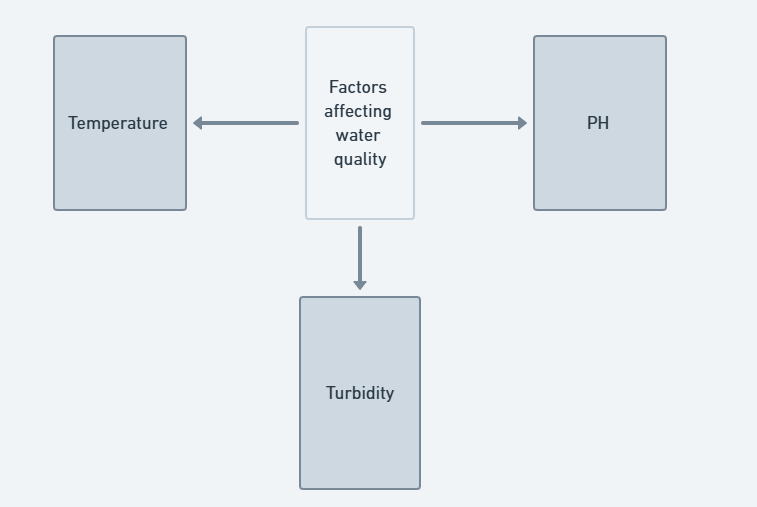
Fig. 1. Factor Affecting Water Quality
The system leverages the Blynk IoT platform, providing easy access to sensor data and visualizations on smartphones or other smart devices. The col- lected data is continuously analyzed, with alerts automatically sent to relevant authorities if contamination or other water quality issues are detected. This facilitates prompt decision- making for water conservation and pollution control.
The main objectives of this paper are:
- To optimize water management using IoT technologies.
- To enhance water conservation by assessing the potential for wastewater reuse.
- To enable real-time monitoring and decision-making in wastewater treatment processes.
II. LITERATURE SURVEY
IoT-based water quality monitoring system that utilizes an Arduino board to measure key water parameters, particularly pH levels [1]. The system is equipped with a pH sensor con- nected to the Arduino, allowing for continuous monitoring of water acidity or alkalinity. To enable remote communication, they incorporated an FSM (Finite State Machine) module, which sends real-time alerts via SMS using a GSM technique. A real-time water quality monitoring system that employs three key sensors to measure essential water parameters [2].
The system focuses on monitoring pH levels, turbidity, and temperature, which are crucial indicators of water quality. pH measures the acidity or alkalinity, turbidity assesses the cloudiness or clarity of water, and temperature reflects the heat level of the water in a given container [2] . This system is designed to provide users with continuous and real- time information on these vital water characteristics, enabling better water management and timely corrective actions where necessary. In this his research on an IoT-based water and soil quality monitoring system, developed a framework for continuously tracking the contamination levels of water resources and soil quality [3].
This system employs various sensors to monitor critical parameters, allowing real-time data collection on water contamination and soil health [3] .
By leveraging IoT, the system facilitates continuous observation, providing valuable insights that can help in the timely management of environ- mental resources and mitigating the impact of pollution. This approach underscores the importance of integrated monitoring systems for both water and soil, aimed at preserving the environment.
In[ 4] work on a water quality monitoring system using a wireless sensor network (WSN), proposed a system compris- ing multiple sensor nodes with networking capabilities. This system allows for continuous and efficient water quality mon- itoring by enabling real-time data collection and transmission [4]. The WSN-based system emphasizes key benefits such as low cost, ease of ad hoc installation, simple handling, and straightforward maintenance, making it a practical solution for widespread environmental monitoring applications. This approach demonstrates the potential of WSN technology to provide scalable and accessible water quality management solutions.
III. IMPLEMENTATION
The proposed system presents an efficient solution for monitoring the water quality of large water bodies. This RC (remote-controlled) boat is designed to record and transmit water quality data to an online IoT server, aiding in water cleanliness efforts. The boat is maneuvered using an RC remote, which controls its movement.
Propulsion is achieved via a motorized propeller, while steering is managed by a servo motor system connected to rudders. When the RC receiver processes a command, the controller activates the DC motor, which propels the boat through a flexible bearing and shaft system. Steering adjustments are made by two rudders oper- ated by a servo motor, allowing the boat to change direction based on controller input.
The system incorporates two sensors to evaluate water quality: a turbidity sensor, a temperature sensor. These sensors provide vital information on suspended particles and other water quality indicators. This makes the system particularly effective for monitoring water bodies such as lakes and reser- voirs
The DS18B20 is a waterproof, 1-meter-long digital temper- ature sensor, ideal for remote or wet conditions. It offers high precision (±0.5°C) with selectable resolution (9 to 12 bits) and works in a temperature range of -55°C to 125°C.
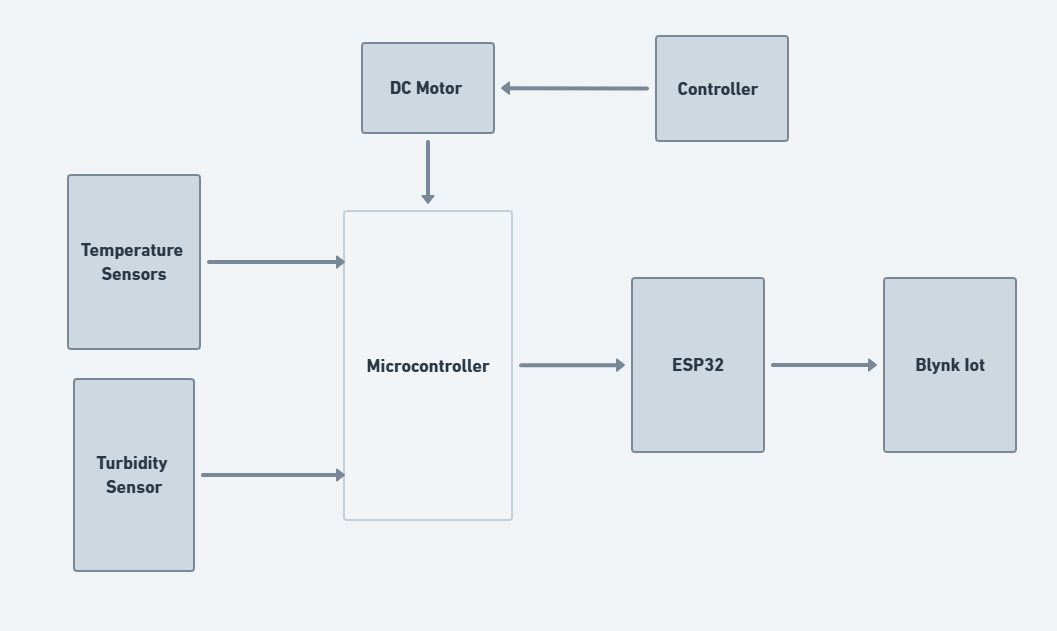 Fig. 2. Block Diagram Of Proposed System
Fig. 2. Block Diagram Of Proposed System
The sensor uses a 1-Wire interface, requiring only one dig- ital pin for communication, and can be connected to multiple sensors with unique 64-bit IDs. It operates with 3.0-5.5V systems. The turbidity sensor measures water clarity based on light transmittance, where the amount of light passing through the water decreases with increasing turbidity caused by suspended particles. It uses an infrared light source to detect the scattering rate and converts it into a current for measurement. The 12V DC motor (1000 RPM) is commonly used in robotics and all-terrain applications, compatible with various motor drivers like the L298N. The L298N motor driver controls up to 4 motors, providing directional and speed control. The MG90S mini servo motor offers 180° rotation, fast response, and is water-resistant.
The Arduino IDE originated from the Processing IDE, but with version 2.0, it will transition to using the Visual Studio Code-based Eclipse Theia framework. As Arduino’s popular- ity as a development platform has grown, many third-party vendors have developed open-source compilers and tools to support micro controllers not included in the official Arduino product line. This project involves two main modules: the remote controller (Module 1) and the RC Boat (Module 2). Module 1 consists of an Microcontroller, an RF module, and two joystick modules. The RF module is used for communi- cation between the remote and the boat. The two joysticks are used to control the movement of the RC boat, allowing the operator to steer and drive it remotely. Module 2 is the RC Boat, which is equipped with various sensors and components for water quality monitoring. These sensors include a turbidity sensor, temperature sensor, and an Arduino Uno to process the data. The collected data is transmitted to a NodeMcu, an open- source IoT platform, using Wi-Fi for data transmission. The data can then be accessed and monitored on a smart device using the Blynk IoT app.
The RC Boat is powered by two 12V DC motors (1000 RPM), which provide forward movement. These motors are controlled via an L298N motor driver. For steering, a stepper motor is connected to the rudder, allowing the boat to turn left or right based on controller inputs. The boat also features a ESP32 to log both the sensor data.This data is transmitted to an IoT server for real-time monitoring. By using a Wi- Fi hotspot, the system sends water quality data to the Blynk app, allowing users to monitor it remotely on their Android devices. The system provides a practical solution for water quality monitoring on lakes, rivers, and reservoirs.
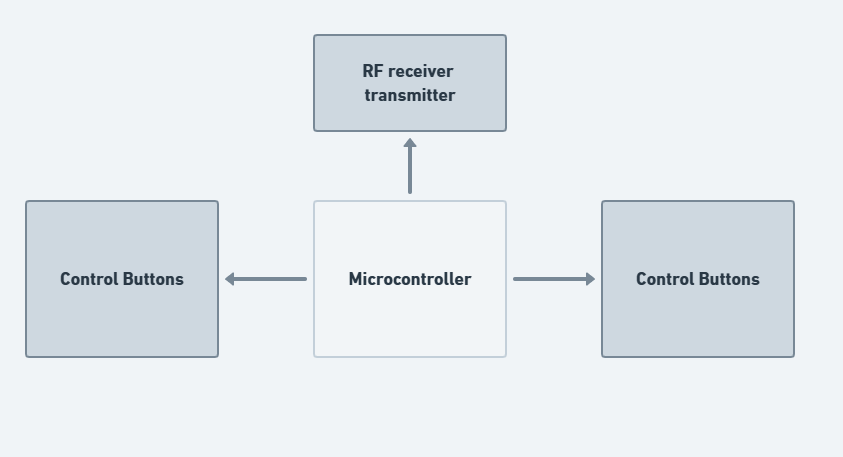
Fig. 3. Transmitter Side Block Diagram
XGBoost is a high-performance machine learning algorithm designed to optimize both accuracy and computational effi- ciency. As a form of gradient boosting, XGBoost combines multiple weak learners (decision trees) to create a more accurate predictive model. Boosting works by sequentially building models that correct the errors made by previous models, leading to a stronger overall classifier. XGBoost’s key strengths lie in its ability to handle structured/tabular data effectively and its use of advanced optimization techniques that enhance model performance. The dataset used in this research includes key water quality indicators: pH, Conductivity, Color, Smell, and Temperature as input features. These features are selected based on their significance in determining water qual- ity for various uses. The target variable contains categorical values representing different water quality categories, such as ”Reusable Water” and ”Water to Irrigation”. Since machine learning algorithms, including XGBoost, require numerical inputs, the categorical target labels must be transformed into numeric form. This was achieved using Label Encoding, which converts the string labels into integers.
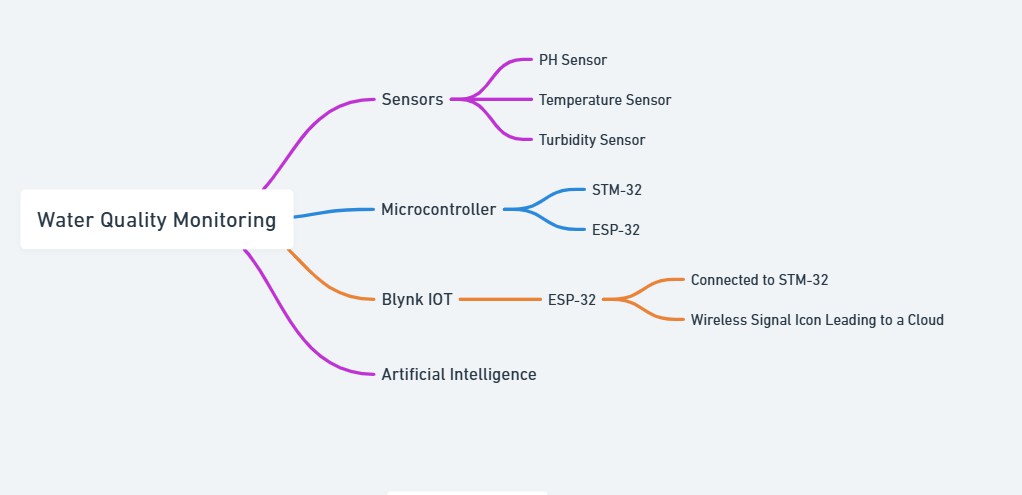 Fig. 4. Complete System Diagram
Fig. 4. Complete System Diagram
In this research, we followed a systematic process for train- ing a machine learning model using the XGBoost algorithm to predict water quality based on specific features. The steps involved are represented in a flowchart, which outlines the entire procedure from data loading to model saving.
First, we began by importing the necessary libraries: Pandas for data manipulation, XGBoost for model training, Scikit- learn’s LabelEncoder for encoding target labels, and joblib for saving the trained model. With the environment set up, we pro- ceeded to load the refined water quality dataset using Pandas’ readcsv() function. This dataset contained input features such as ’pH’, ’Conductivity’, ’Color’, ’Smell’, and ’Temperature’, which are crucial for predicting water quality, as well as a target column labeled ’Target’, representing the water quality class.
Next, we separated the input features (the independent variables) from the target column (the dependent variable). Since the target labels were categorical, we encoded them into numerical format using LabelEncoder. This step is essential for machine learning algorithms like XGBoost, which require the target labels to be in numeric form.
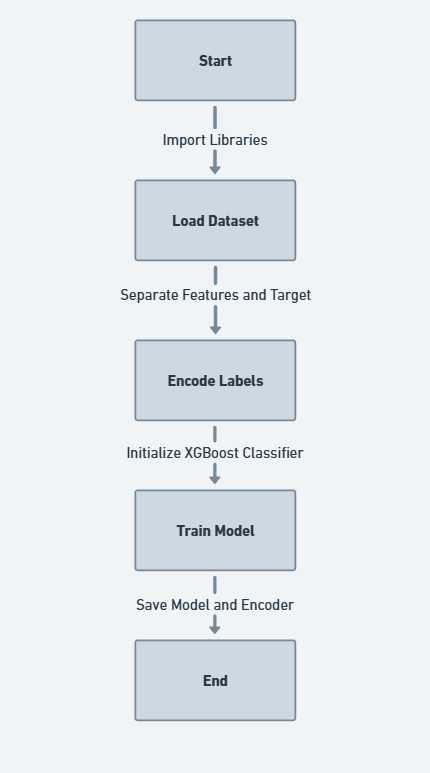
Fig. 5. XGBOOST FLOWCHART
We then initialized the XGBoost Classifier, choosing parameters such as nestimators=100 to control the number of trees in the model and setting randomstate=42 to ensure reproducibility. To avoid warnings related to XGBoost’s internal label encoding, we set the uselabelencoder=False parameter. With the classifier initialized, we proceeded to train the model using the input features and the encoded target values. During this training phase, the model learned the relationships between water quality indicators (like pH and temperature) and the classification of water quality.
After successfully training the model, we saved both the model and the label encoder using joblib. The model was saved as ”xgboost water quality model.pkl” and the label en- coder as ”labelencoder.pkl”, allowing us to easily reload them in the future for making predictions on new data without needing to retrain the model. This process, represented in the flowchart, provided a clear, repeatable framework for building and deploying a machine learning solution for water quality prediction.
IV. RESULTS AND DISCUSSION
The temperature sensor data is transmitted to the Blynk app, where users can visualize real-time temperature changes, set alarms for specific thresholds, and control systems such as heating or cooling based on the readings. The central server that stores sensor data and enables communication between hardware devices and the Blynk app. Blynk Cloud processes data from your IoT devices, ensures secure communication, and enables data storage, notifications, and event logging. TDS sensors measure the combined content of all dissolved substances in water With Blynk, conductivity data
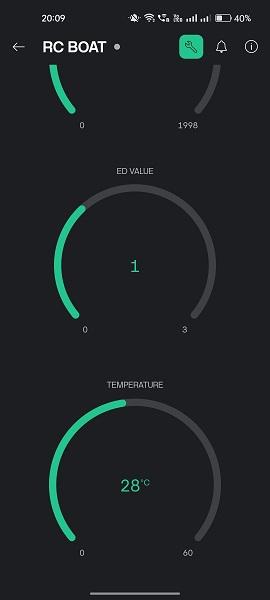
Fig. 6. Blynk IOT App
can be continuously monitored, providing insight into the quality of water in real-time. This information is critical in industries such as aquaculture, agriculture, and wastewater treatment Blynk allows users to track TDS levels in real- time. In applications like water purification, users can set up alerts to trigger maintenance or activate filtration systems when TDS levels exceed predetermined limits. The data from the TDS sensor is valuable for ensuring that water quality remains within safe and efficient operational parameters. The integration of temperature, conductivity, and TDS sensors with the Blynk IoT platform offers a powerful solution for real-time monitoring and control in various applications. By leveraging the capabilities of Blynk, users can ensure timely responses to environmental changes, optimize processes, and enhance overall system efficiency.
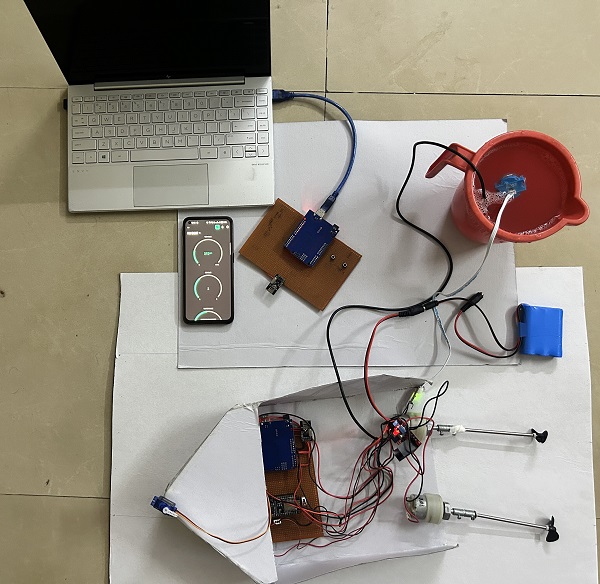
Fig. 7. Hardware Implementation
The model has provided predictions for each sample in the dataset, labeling them as either ”Reusable Water” or ”Water to Irrigation.”
- Distribution of Predictions: Based on the output, we can observe that: Some samples are classified as ”Reusable Water,” meaning they meet the criteria for being treated and potentially used again. Other samples are classified as ”Water to Irrigation,” which might indicate that the water quality is not high enough for direct reuse and might be more suited for irrigation purposes.
- Model’s Behavior with Different Values: The model might classify water as ”Reusable Water” when the pH, conductivity, or other feature values fall within certain ranges, possibly reflecting conditions suitable for safe reuse. Similarly, samples predicted as ”Water to Irrigation” might have certain feature values (like pH, conductivity, etc.) that fall outside the ideal range for reuse, making them better suited for irrigation.
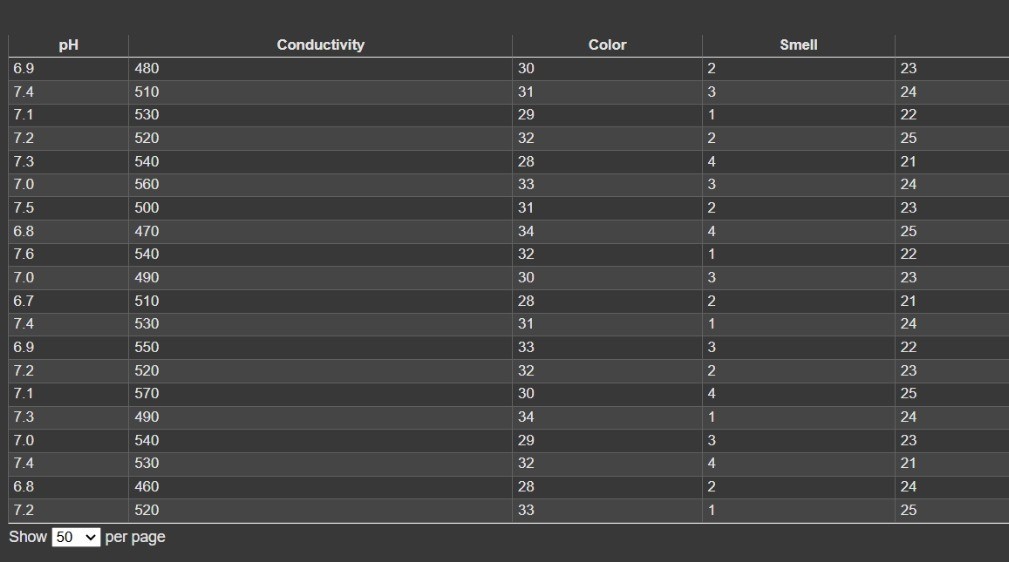
Fig. 8. Extracted Values
Possible Inferences are as follows:
- Sensor Measurements Influence Reusability: The sensor values (e.g., pH, conductivity, color, smell, temperature) have a noticeable impact on whether water is deemed reusable or more suitable for irrigation. This shows the model has learned patterns in the training data that it’s now applying to this new data.
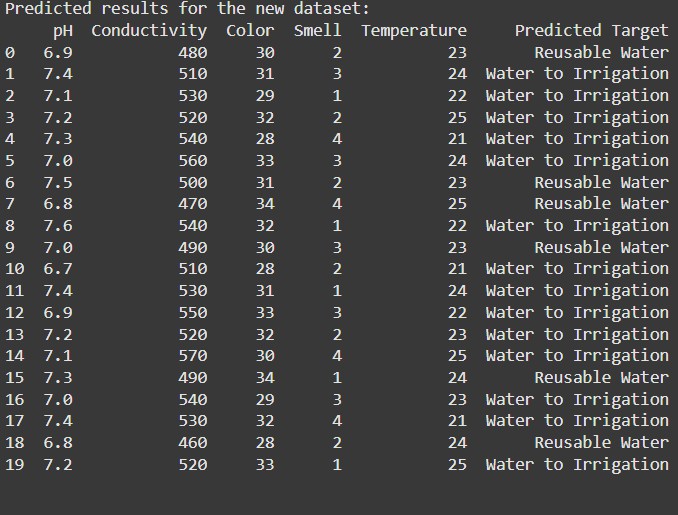
Fig. 9. Result after ML Model
- Potential for Threshold Analysis: You could investigate the specific ranges of values (e.g., specific pH or conduc- tivity levels) where the model tends to predict ”Reusable Water” versus ”Water to Irrigation.” This insight might help in
References
[1] R. Seetharaman, N. Nivetha, S. V. Dakshin, K. Anandan, and R. R. Sreeja, ”Arduino based System for Domestic Waste Water Management using pH Sensor,” 2022 Sixth International Conference on I-SMAC (IoT in Social, Mobile, Analytics and Cloud) (I-SMAC), Dharan, Nepal, 2022, pp. 352-355, doi: 10.1109/ISMAC55078.2022.9987299. [2] A. K. Dudhpachare, T. V. Kuthe, C. V. Lalke, N. P. Wyawahare, R. Agrawal, and P. Daigavane, ”Process of RO’s Waste Water Reuse and Water Management in Society by Using IoT Automation,” in 2022 International Conference on Applied Artificial Intelligence and Computing (ICAAIC), Salem, India, 2022, pp. 1546- 1550, doi:https://doi.org/10.1109/ICAAIC53929.2022.979280510.1109/ICAAIC53929.2022.9792805. [3] A. A. S. Chowdhury, Y. Arafat, and M. S. Alam, ”IoT-GSM Based Controlling and Monitoring System to Prevent Water Wastage, Wa- ter Leakage, and Pollution in the Water Supply,” 2022 Interna- tional Conference on Innovations in Science, Engineering and Tech- nology (ICISET), Chittagong, Bangladesh, 2022, pp. 567-572, doi: 10.1109/ICISET54810.2022.9775876. [4] D. Vakula and Y. K. Kolli, ”Waste water management for smart cities,” in 2017 International Conference on Intelligent Sustainable Systems (ICISS),Palladam, India, 2017, pp. 275-279, doi:https://doi.org/10.1109/ISS1.2017.8389414 10.1109/ISS1.2017.8389414. [5] R. S. Darshan, H. Pavan, R. Pratheesh, M. S. Raj, K. V. Suresh, and C. Prathap, ”An IoT Enabled Water Management System with Water Usage Prediction using ANN,” 2021 2nd Global Conference for Advancement in Technology (GCAT), Bangalore, India, 2021, pp. 1-7, doi: 10.1109/GCAT52182.2021.9587502. [6] A. P. Gopi and K. J. Naik, ”A Model for Analysis of IoT based Aquarium Water Quality Data using CNN Model,” 2021 International Conference on Decision Aid Sciences and Application (DASA), Sakheer, Bahrain, 2021, pp. 976-980, doi: 10.1109/DASA53625.2021.9682251. [7] A. L. Lopez, N. A. Haripriya, K. Raveendran, S. Baby, and C. Priya, ”Water quality prediction system using LSTM NN and IoT,” 2021 IEEE International Power and Renewable Energy Confer- ence (IPRECON), Kollam, India, 2021, pp. 1-6, doi: 10.1109/IPRE- CON52580.2021.9732862.
Copyright
Copyright © 2025 Rushabh Manwatkar, Nishant Chamate, Pallavi Malame. This is an open access article distributed under the Creative Commons Attribution License, which permits unrestricted use, distribution, and reproduction in any medium, provided the original work is properly cited.

Download Paper
Paper Id : IJRASET66030
Publish Date : 2024-12-20
ISSN : 2321-9653
Publisher Name : IJRASET
DOI Link : Click Here
 Submit Paper Online
Submit Paper Online

